Introduction to Oscillatory Motion
Oscillatory motion is a fascinating phenomenon that can be observed in various natural and man-made systems. It refers to the repetitive back-and-forth motion of an object about a central position or equilibrium. This type of motion is characterized by its periodicity, meaning that it repeats itself over a specific time interval. In this section, we will explore the definition of oscillatory motion and discuss its key characteristics.
Definition of Oscillatory Motion
Oscillatory motion can be defined as the motion of an object that repeatedly moves back and forth around a stable position. This stable position is often referred to as the equilibrium point. The object oscillates between two extreme points, known as the amplitude, on either side of the equilibrium position. The motion is periodic, meaning that it follows a regular pattern and repeats itself after a fixed interval of time.
Oscillatory motion can occur in various systems, ranging from simple pendulums and vibrating strings to more complex systems like swinging pendulums, oscillating fans, and rocking chairs. It is a fundamental concept in physics and finds applications in many fields, including engineering, music, and biology.
Characteristics of Oscillatory Motion
Oscillatory motion exhibits several key characteristics that distinguish it from other types of motion. These characteristics include:
-
Periodicity: Oscillatory motion is characterized by its repetitive nature. The object follows a regular pattern and completes one cycle of motion within a specific time period. This time period is known as the period of oscillation.
-
Amplitude: The amplitude of oscillatory motion refers to the maximum displacement of the object from its equilibrium position. It represents the distance between the extreme points of the motion and determines the range of the oscillation.
-
Frequency: The frequency of oscillatory motion is the number of complete cycles or oscillations that occur per unit of time. It is the reciprocal of the period and is measured in hertz (Hz).
-
Harmonic Motion: Oscillatory motion often follows a harmonic pattern, where the restoring force acting on the object is directly proportional to its displacement from the equilibrium position. This type of motion is described by simple harmonic motion equations and exhibits sinusoidal behavior.
-
Energy Conservation: In oscillatory motion, the total mechanical energy of the system remains constant throughout the motion. The energy is continuously transferred between potential energy and kinetic energy as the object oscillates back and forth.
By understanding these characteristics, we can gain insights into the behavior of oscillatory systems and analyze their motion mathematically. In the following sections, we will explore some examples of oscillatory motion to further illustrate these concepts.
Examples of Oscillatory Motion
Oscillatory motion is a type of periodic motion where an object moves back and forth repeatedly. This motion can be observed in various everyday objects and phenomena. Let’s explore some interesting examples of oscillatory motion:
Swings


Swings are a classic example of oscillatory motion. Whether it’s a playground swing or a porch swing, the motion of swinging back and forth is a perfect illustration of oscillation. As you push the swing, it moves away from its equilibrium position, gaining potential energy. As it swings back, the potential energy is converted into kinetic energy, causing the swing to reach its maximum height before swinging back again. This repetitive motion creates a soothing and enjoyable experience.
Pendulum
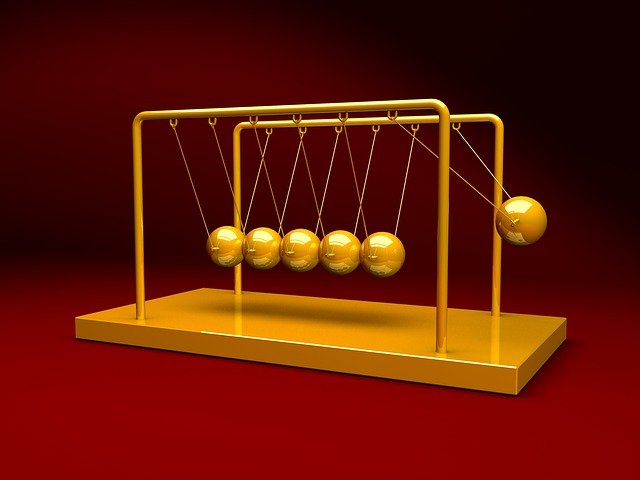
Another well-known example of oscillatory motion is the pendulum. A pendulum consists of a mass (known as the bob) attached to a fixed point by a string or rod. When the pendulum is displaced from its equilibrium position and released, it swings back and forth in a regular pattern. The time it takes for the pendulum to complete one full swing is called the period. Pendulums are used in various applications, such as grandfather clocks and metronomes, to keep time accurately.
Newton’s Cradle

Newton’s Cradle is a fascinating device that demonstrates the principles of conservation of momentum and energy. It consists of a series of suspended metal balls. When one ball on the end is lifted and released, it collides with the adjacent balls, causing the last ball to swing out and then swing back. This motion continues back and forth until the energy is dissipated. Newton’s Cradle is often used as a decorative item and a visual representation of the laws of physics.
Wall Clock with Pendulum
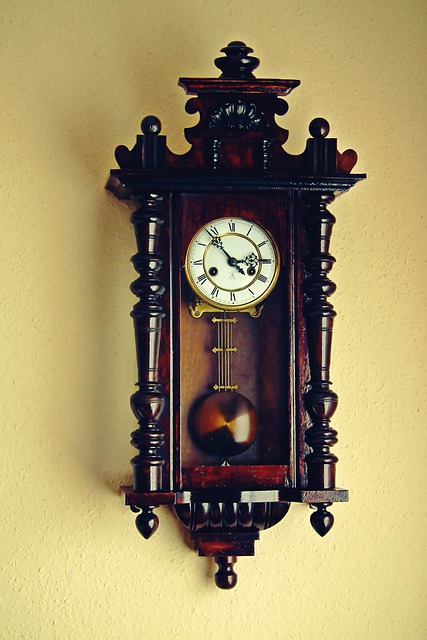
Wall clocks with pendulums are not only functional timekeeping devices but also showcase oscillatory motion. The pendulum in a wall clock swings back and forth, regulating the movement of the clock’s hands. The swinging motion of the pendulum is carefully calibrated to ensure accurate timekeeping. These clocks add a touch of elegance to any room while reminding us of the beauty of oscillatory motion.
Tuning Fork
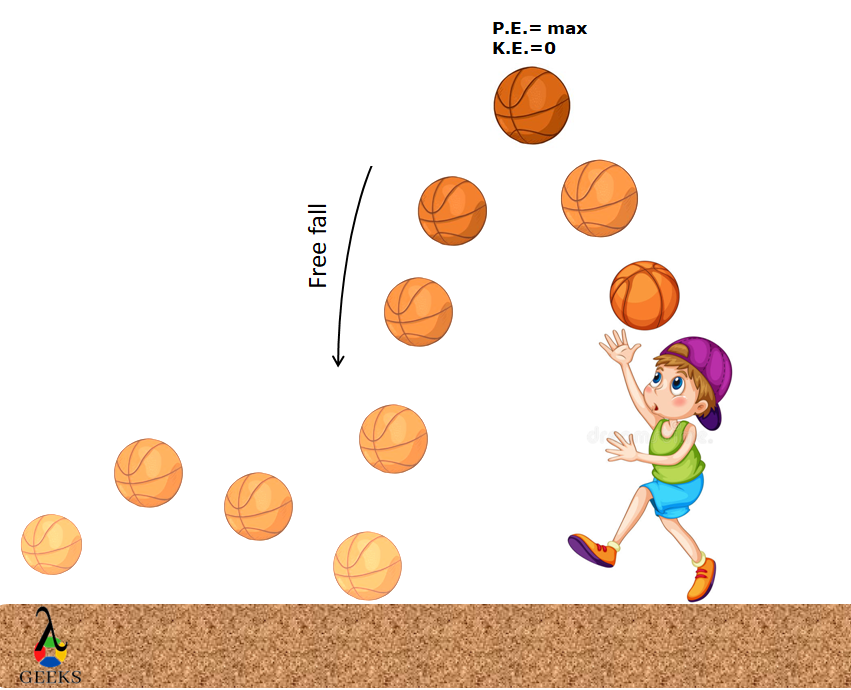

A tuning fork is a metal instrument that produces a pure musical tone when struck against a surface. When a tuning fork is struck, it vibrates at a specific frequency, creating an oscillatory motion. The prongs of the tuning fork move back and forth rapidly, producing a sound wave with a consistent pitch. Tuning forks are commonly used to tune musical instruments and as a reference for pitch in scientific experiments.
Slinky
The Slinky toy is not only entertaining but also a great example of oscillatory motion. When you hold a Slinky at the top and let it hang freely, it elongates due to gravity. When released, the Slinky contracts and expands repeatedly as it moves up and down. This motion resembles a wave traveling through the Slinky, creating a mesmerizing visual effect.
Spring
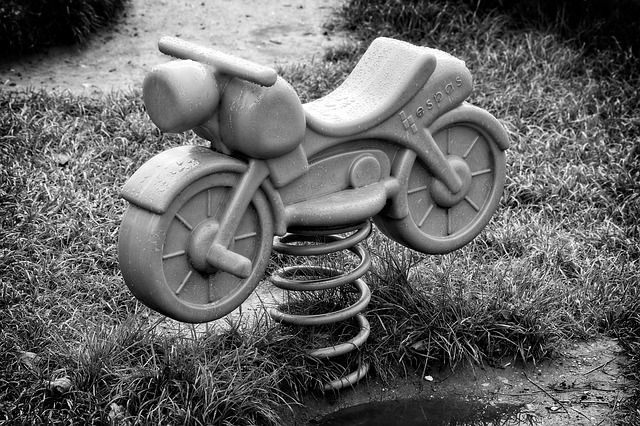
Springs are widely used in various mechanical systems and also exhibit oscillatory motion. When a spring is compressed or stretched from its equilibrium position and then released, it undergoes oscillation. The spring moves back and forth, alternating between potential and kinetic energy. Springs are essential components in devices like car suspensions, mattresses, and pogo sticks.
Birds Flapping Wings

Birds flying and flapping their wings is a natural example of oscillatory motion. As birds flap their wings, they create an upward and downward motion, allowing them to generate lift and stay airborne. The flapping motion of their wings is a continuous oscillation, enabling birds to maneuver through the air and maintain their flight.
These examples demonstrate the ubiquity of oscillatory motion in our daily lives. From swings and pendulums to tuning forks and birds in flight, oscillatory motion is a fundamental aspect of the world around us. Understanding and appreciating these examples can deepen our understanding of the principles of physics and the beauty of nature.
Rope Stretched

When it comes to examples of oscillatory motion, one classic illustration is the scenario of a rope being stretched and released. This simple yet fascinating demonstration showcases the principles of oscillation and periodic motion.
Imagine you have a long rope in your hands. You hold one end firmly while allowing the other end to hang freely. Initially, the rope is in a state of equilibrium, with no motion occurring. However, as soon as you give the free end a gentle tug and then release it, something remarkable happens.
The Rope’s Oscillation
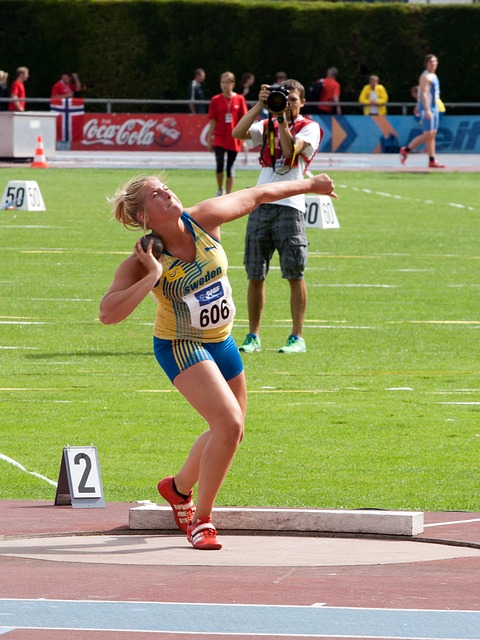
As the free end of the rope is released, it begins to swing back and forth, creating a mesmerizing pattern of motion known as oscillation. This oscillatory motion occurs due to the interplay between potential and kinetic energy.
When you initially stretch the rope and then let it go, it possesses potential energy. As the free end starts moving, this potential energy is converted into kinetic energy. The rope’s motion is driven by the interconversion of these two forms of energy.
The Role of Equilibrium
Equilibrium plays a crucial role in the oscillatory motion of the rope. At the point of release, the rope is in a state of equilibrium, meaning that the forces acting on it are balanced. However, as soon as the rope is released, this equilibrium is disrupted.
The force of gravity acts on the rope, pulling it downward. Simultaneously, tension builds up within the rope, trying to restore the equilibrium. This interplay between gravity and tension causes the rope to swing back and forth, oscillating around its equilibrium position.
Factors Affecting Oscillation
Several factors influence the oscillatory motion of the rope. The length of the rope, the force applied during the initial stretch, and the angle at which the rope is released all play a role in determining the characteristics of the oscillation.
For instance, a longer rope will typically result in a slower oscillation, while a shorter rope will oscillate more rapidly. Similarly, a stronger initial force will lead to a larger amplitude of oscillation, while a smaller force will result in a smaller amplitude.
Real-World Applications
The concept of oscillatory motion in a stretched rope has practical applications in various fields. For example, it is utilized in the design of suspension bridges, where the cables are subjected to oscillatory forces caused by the movement of vehicles and wind.
Understanding the principles of oscillatory motion can also be beneficial in fields such as engineering, physics, and even music. By studying the behavior of oscillating systems, scientists and engineers can develop more efficient structures, design musical instruments, and analyze the behavior of waves.
In conclusion, the example of a rope being stretched and released provides a captivating illustration of oscillatory motion. Through the interplay of potential and kinetic energy, the rope oscillates back and forth, demonstrating the fundamental principles of periodic motion. This example highlights the significance of equilibrium and the various factors that influence the characteristics of oscillation. Moreover, it showcases the real-world applications of oscillatory motion in fields ranging from engineering to music.
Frequently Asked Questions about Oscillatory Motion
Variables involved in oscillatory motion
Oscillatory motion is a type of periodic motion where an object moves back and forth repeatedly. It is characterized by the presence of certain variables that influence the behavior of the oscillating object. Here are some frequently asked questions about the variables involved in oscillatory motion:
1. What is the amplitude of oscillatory motion?
The amplitude of oscillatory motion refers to the maximum displacement of the object from its equilibrium position. It represents the distance between the extreme points of the object’s motion. In simple terms, it measures how far the object moves from its resting position during each oscillation.
2. What is the period of oscillatory motion?
The period of oscillatory motion is the time taken for one complete cycle of oscillation. It is the time it takes for the object to return to its initial position after completing one full oscillation. The period is usually denoted by the symbol “T” and is measured in seconds.
3. How does the mass of an object affect its oscillatory motion?
The mass of an object plays a crucial role in determining its oscillatory motion. Heavier objects require more force to set them in motion and to keep them oscillating. Therefore, increasing the mass of an object will result in a decrease in the amplitude of oscillation and an increase in the period of oscillation.
4. What is the role of the restoring force in oscillatory motion?
The restoring force is a force that acts on an object to bring it back to its equilibrium position. In oscillatory motion, the restoring force is responsible for pulling the object back towards its resting position when it is displaced. It is this force that causes the object to oscillate back and forth.
5. How does the elasticity of a material affect oscillatory motion?
The elasticity of a material determines how easily it can be deformed and how quickly it can regain its original shape. In oscillatory motion, the elasticity of the material affects the strength of the restoring force. A more elastic material will have a stronger restoring force, resulting in a higher frequency of oscillation.
Role of frictional force in oscillatory motion
Frictional force is a common phenomenon that affects the motion of objects in various scenarios. When it comes to oscillatory motion, friction plays a significant role. Here are some frequently asked questions about the role of frictional force in oscillatory motion:
1. How does friction affect the amplitude of oscillatory motion?
Frictional force opposes the motion of an object, causing it to lose energy. In the case of oscillatory motion, friction gradually reduces the amplitude of the oscillations over time. This is because the energy of the system is continuously being dissipated due to the work done against friction.
2. Can friction stop oscillatory motion completely?
Friction can eventually bring an oscillating object to a complete stop if left unchecked. As the object loses energy due to friction, the amplitude of the oscillations decreases until it reaches zero. At this point, the object is said to have come to rest, and the oscillatory motion ceases.
3. How can friction be minimized in oscillatory systems?
To minimize the effects of friction in oscillatory systems, various techniques can be employed. One common approach is to use lubricants or reduce the contact area between the moving parts to decrease the frictional force. Additionally, using materials with low friction coefficients can also help reduce the impact of friction on oscillatory motion.
4. Does friction affect the period of oscillatory motion?
Friction does not directly affect the period of oscillatory motion. The period is determined by the properties of the system, such as the mass and the restoring force. However, friction can indirectly affect the period by reducing the amplitude of the oscillations, which in turn affects the time taken for one complete cycle.
5. Can friction change the frequency of oscillatory motion?
Friction does not change the frequency of oscillatory motion. The frequency is determined solely by the properties of the system, such as the mass and the restoring force. Friction only affects the amplitude and energy of the oscillations, but not the frequency.
In conclusion, understanding the variables involved in oscillatory motion and the role of frictional force is crucial in comprehending the behavior of oscillating objects. These factors influence the amplitude, period, and energy of the oscillations, ultimately shaping the motion of the system. By minimizing the effects of friction, engineers and scientists can design more efficient oscillatory systems for various applications.
Conclusion
In conclusion, oscillatory motion is a fascinating phenomenon that can be observed in various aspects of our daily lives. From the swinging of a pendulum to the vibrations of a guitar string, oscillatory motion is all around us. It is a repetitive back-and-forth motion that occurs around a central equilibrium position. This type of motion can be found in mechanical systems, such as springs and pendulums, as well as in waves and electrical circuits. Understanding oscillatory motion is crucial in fields like physics and engineering, as it allows us to analyze and predict the behavior of systems that exhibit this type of motion. By studying oscillatory motion examples, we can gain a deeper understanding of the principles that govern the world around us. So, the next time you see a swinging pendulum or hear the sound of a vibrating guitar string, take a moment to appreciate the beauty of oscillatory motion and the intricate ways in which it shapes our world.
Frequently Asked Questions
What is oscillatory motion and give two examples?
Oscillatory motion refers to the repetitive back-and-forth movement of an object around a central position. Two examples of oscillatory motion are a swinging pendulum and a vibrating string.
What are some examples of periodic motion?
Some examples of periodic motion include the swinging of a pendulum, the rotation of the Earth around its axis, and the motion of a rocking chair.
Can you explain oscillatory motion?
Oscillatory motion is a type of motion where an object repeatedly moves back and forth around a central position. It can be described as a periodic motion that follows a specific pattern.
What are some examples of oscillatory motion in real life?
Examples of oscillatory motion in real life include the swinging of a pendulum, the motion of a metronome, and the oscillating movement of an oscillating fan.
How can you depict oscillation in a drawing?
Oscillation can be depicted in a drawing by showing an object moving back and forth around a central position. This can be represented by drawing a curved line that shows the path of the object as it oscillates.
What is the principle behind a simple pendulum?
The principle behind a simple pendulum is that it exhibits periodic motion due to the force of gravity acting on a mass suspended from a fixed point. The motion of a simple pendulum follows a harmonic motion pattern.
How does a tuning fork produce oscillatory motion?
A tuning fork produces oscillatory motion by vibrating at a specific frequency when struck. The tines of the tuning fork move back and forth rapidly, creating sound waves and producing a distinct pitch.
What is the role of a metronome in oscillatory motion?
A metronome is a device used to provide a regular beat or rhythm for musicians. It produces oscillatory motion by swinging a pendulum back and forth at a constant rate, helping musicians maintain a steady tempo.
How does a vibrating string exhibit oscillatory motion?
A vibrating string exhibits oscillatory motion by moving back and forth in a periodic manner when plucked or struck. The string vibrates at specific frequencies, producing different musical notes.
What is the role of a rocking chair in oscillatory motion?
A rocking chair is designed to provide oscillatory motion. When a person sits on a rocking chair and pushes off the ground, the chair rocks back and forth, creating a soothing and repetitive motion.
Also Read:
- Linear motion examples
- Newtons laws of motion
- Example of inertia of motion
- Horizontal motion examples
- Vertical motion examples
- Projectile motion problems
- Newtons second law of motion examples
- Reciprocating motion examples
- Example of relative motion
- Horizontal projectile motion
Hi, I’m Akshita Mapari. I have done M.Sc. in Physics. I have worked on projects like Numerical modeling of winds and waves during cyclone, Physics of toys and mechanized thrill machines in amusement park based on Classical Mechanics. I have pursued a course on Arduino and have accomplished some mini projects on Arduino UNO. I always like to explore new zones in the field of science. I personally believe that learning is more enthusiastic when learnt with creativity. Apart from this, I like to read, travel, strumming on guitar, identifying rocks and strata, photography and playing chess.